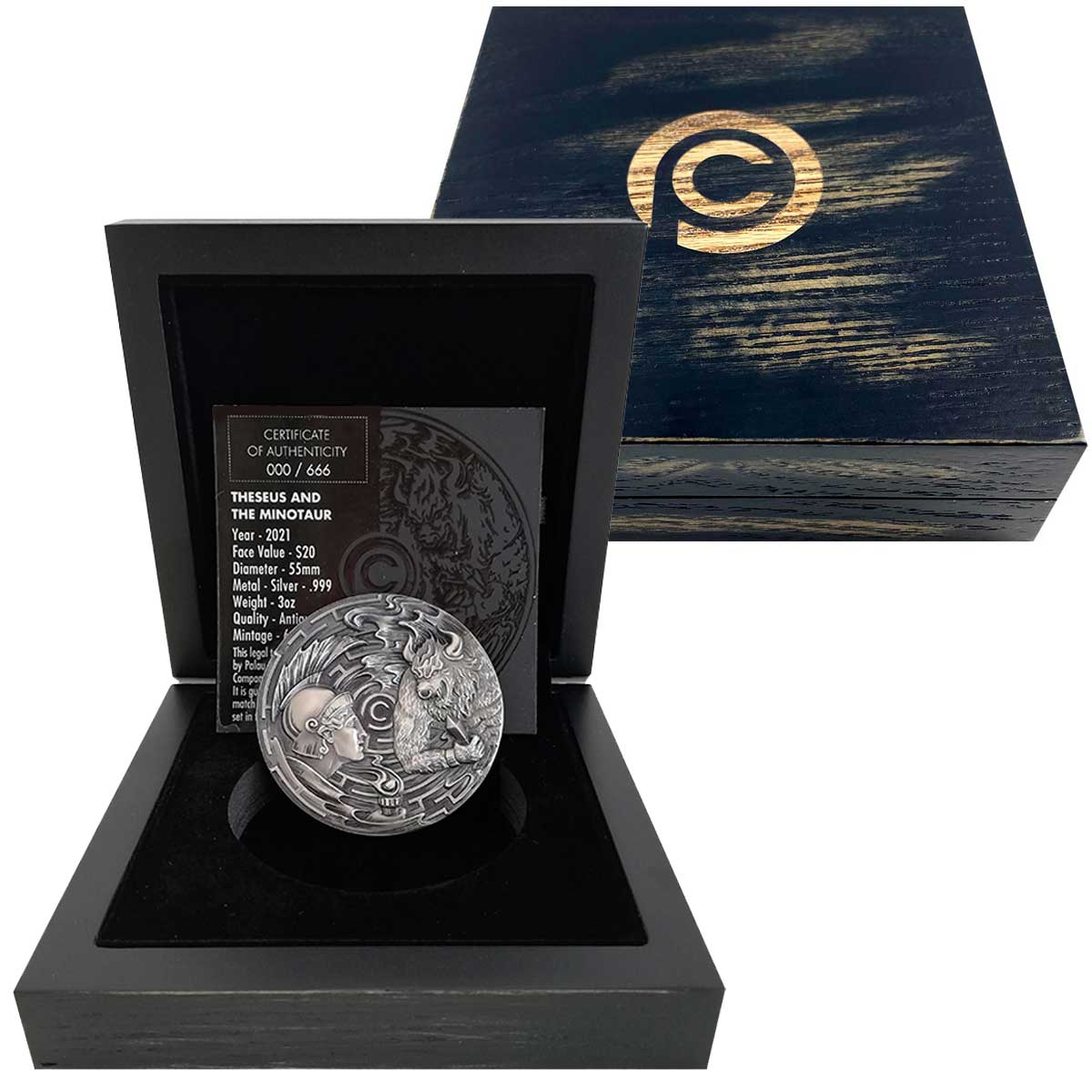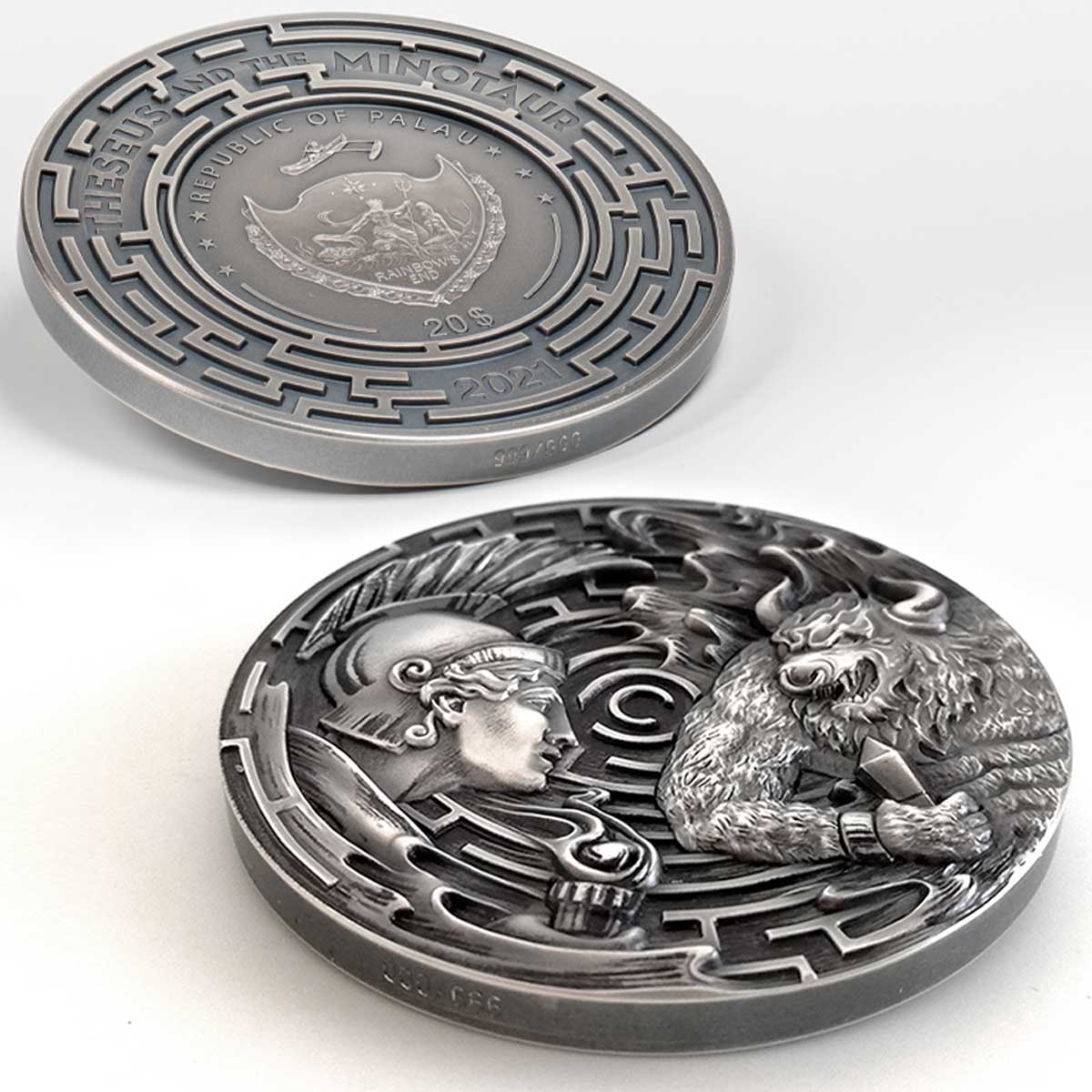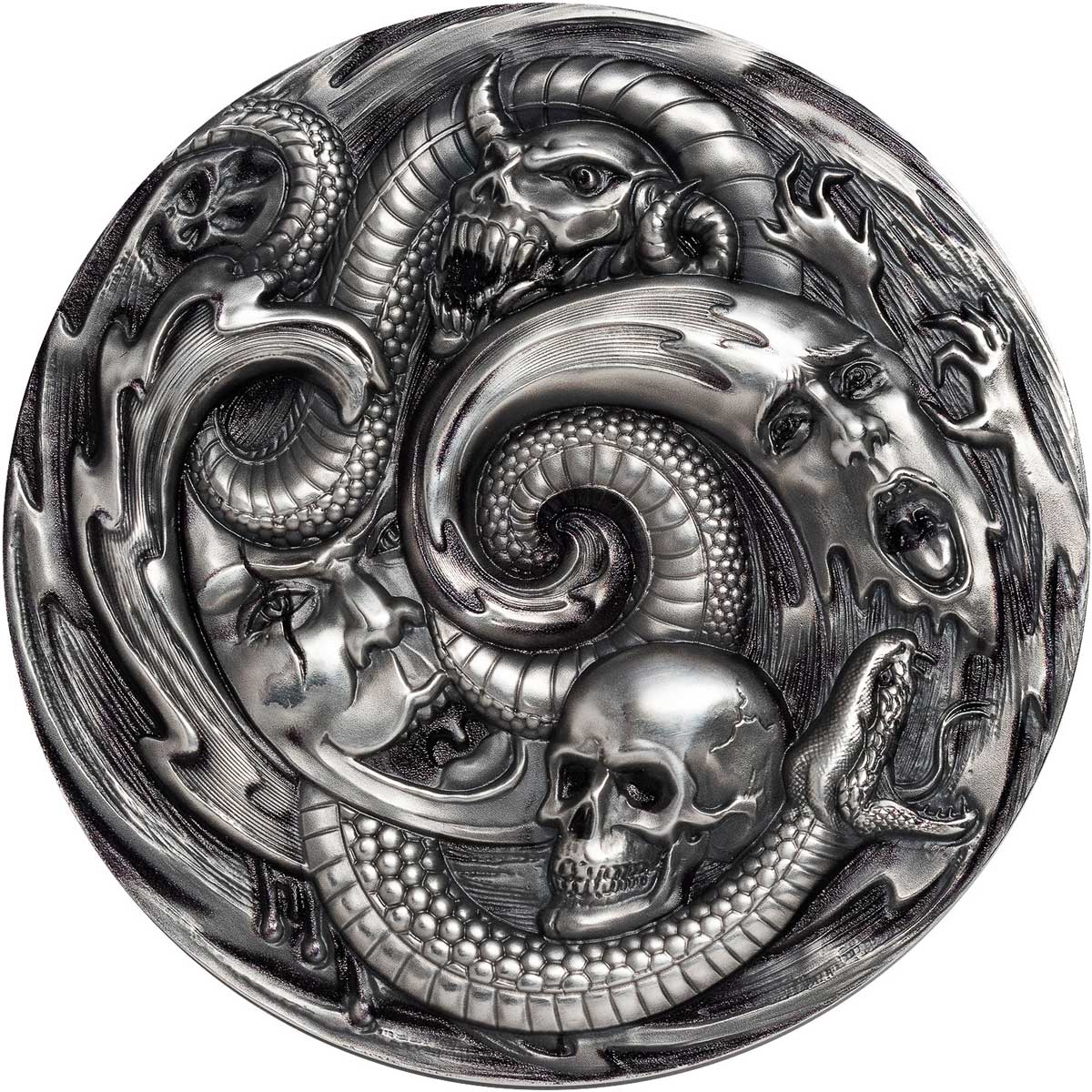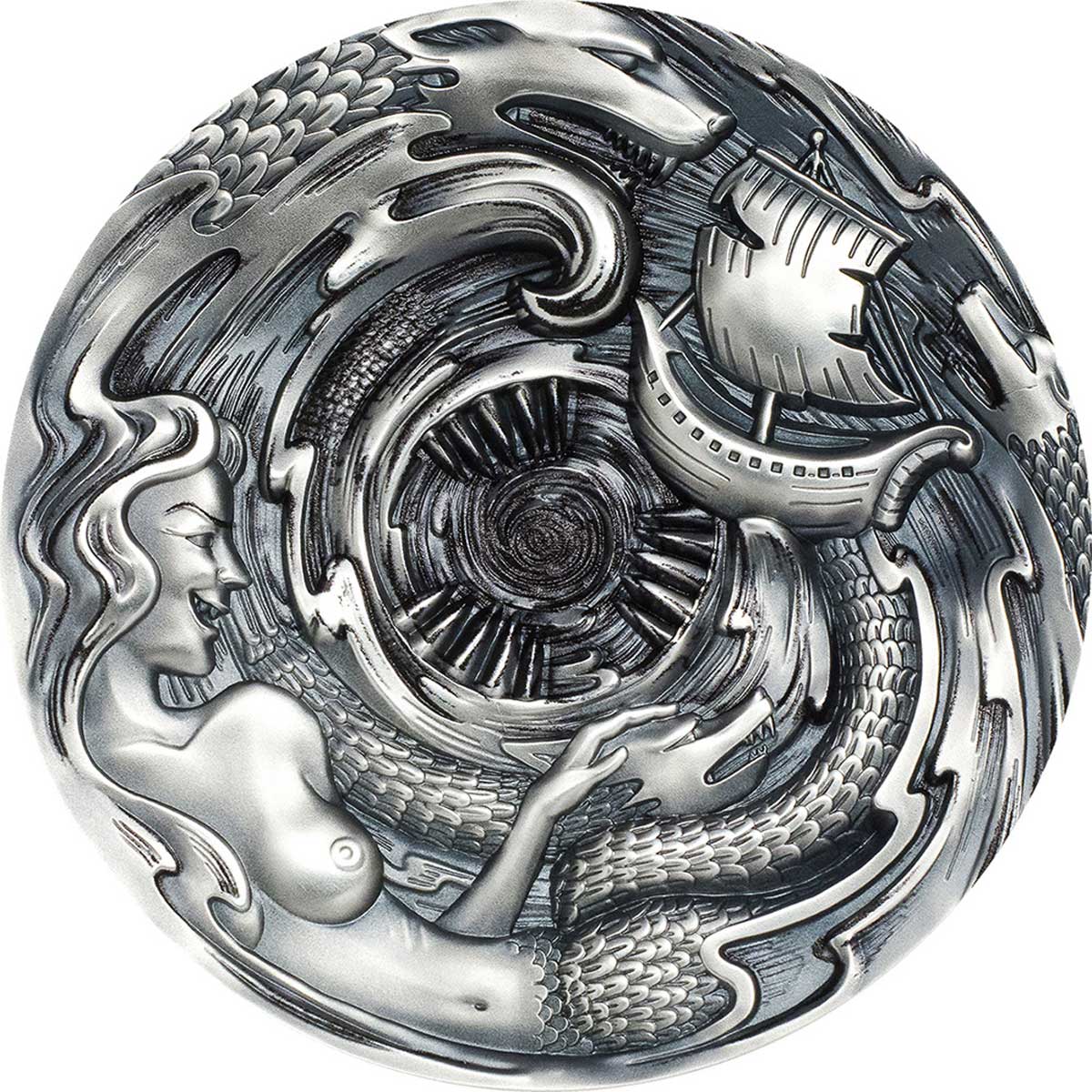The tale of the Greek hero Theseus, and the terrifying Minotaur, inspire Powercoin’s third ‘Evil Within’ silver coin
The ‘Evil Within’ is a perennial classic in the worlds of myth and legend, so Powercoin’s use of the concept for its three-ounce silver coin series has opened up some interesting tales for representation in numismatics. We’ve already seen the legendary Pandora’s Box, and the lesser known tale of Scylla and Charybdis, but for this third coin, we’re on very familiar territory.
The Minotaur in the labyrinth, hunted and killed by the Greek hero, Theseus, has appeared on coins before, but Powercoin have adapted it to fit the spinning-like style of this series, using Italian coin designer Chiara Principe to do the honours again. The design has centred around a vortex at the centre in the past, but here we see a representation of the famous maze at the centre of the story filling the background field. Theseus is depicted to the left, holding a flaming torch, while the Minotaur charges from the right with a sharp weapon in hand.
The very nature of the tale doesn’t lend itself too well to the spinning style of the first two coins in the series, but it is there in a more subtle form, and the use of the circular labyrinth is a nice touch, especially in combination with a lightly concave strike. It’s all antique-finished, with smartminted high-relief. The obverse has the shield of Palau at its centre, surrounded by a themed border, in this case another maze. We like that each issue in this series has a custom themed obverse.
Available to order now, the coin has a mintage of 666 pieces, and comes boxed with a Certificate of Authenticity. A nice design, in a series with a unique visual style, something we can all get behind.
THE LEGEND OF THESEUS AND THE MINOTAUR
Minos was one of the three sons from the union of Europa and Zeus; when Zeus took the form of a bull. Europa’s husband was the King of Crete, Asterion, who looked over the boys as if they were his own. When Asterion died, it was unclear which of the three sons should ascend to power. Minos claimed that he had the support and authority from the gods to rule and to prove it, while sacrificing to Poseidon, he prayed that a bull would appear from the depths of the sea. Minos vowed to heaven that he would sacrifice the bull to Poseidon once it appeared, and a magnificent bull did appear. He became king and banished his two brothers.
King Minos did not fulfil his vow to Poseidon; he kept the majestic bull for himself and sacrificed a different one to the god. Angered by the disrespect, Poseidon punished Minos by instilling a passion within the king’s wife, Pasiphae, for the bull. Queen Pasiphae, plagued by her divinely inflicted desires, sought the help of Daedalus and Icarus. For Pasiphae, Daedalus constructed a wooden cow coated with a real cow hide and placed it upon wheels. Daedalus, then, put Queen Pasiphae inside the structure and wheeled her into the meadow that her beloved bull grazed in. It was there that she met and laid with the bull, since the bull thought the wooden cow was real. It is from this union that the Minotaur was born. The queen named the beast Asterion, and he became ferocious and monstrous. Asterion was unable to find a suitable source of food, and so he started to eat people. In order to hide his wife’s disgraceful affair and on the advice of an Oracle, King Minos commanded Daedalus and Icarus to build a grand Labyrinth to house his wife’s son.
.
While the construction of the Labyrinth was underway, King Minos discovered that his only human son, Androgeos had been killed, and he blamed the Athenians. He sailed against the Athenians and harassed them until they agreed to pay a tribute to Crete of seven maidens and seven youths every nine years. Theseus, son of the Athenian King Aegeus, was said to have volunteered for the third tribute of youths and boasted to his father and to all of Athens that he would slay the Minotaur. He promised that on the journey home he would raise his white sails if he was victorious, or have the crew fly black sails if he failed and was killed. Upon reaching Crete, the daughters of King Minos: Ariadne and Phaedra fell deeply in love with him. Unable to cope with Theseus being eaten by her half-brother the Minotaur, Ariadne went to Daedalus for help.
Following Daedalus’ instructions, she handed Theseus a ball of string to help him find his way out of the Labyrinth. Upon entering the Labyrinth, Theseus tied one end of the string to the door and continued into the maze. He found the Minotaur in the furthest corner of the Labyrinth and killed him with jabs of his fist. After, Theseus simply follows the thread back through the maze to find his way to the doors. He finds and leads the other Athenians out of the maze and quickly sails off to Athens with Ariadne and Phaedra. On the journey home, Theseus abandons Ariadne on the island of Naxos and continues to sail to Athens with his intended wife, Phaedra. Theseus is overjoyed to be almost home, but forgets to change the colour of his sails from black to white. His father, King Aegeus, seeing the black sails from afar, is overcome with grief and kills himself by jumping off a cliff into the sea. It is this act which secures Theseus’ place as the new Athenian king and explains the origin name of the Aegean Sea.
Garcia, B. (2013, September 01). Minotaur. World History Encyclopedia. Retrieved from https://www.worldhistory.org/Minotaur/
| SPECIFICATION | |
| DENOMINATION | $20 Palau |
| COMPOSITION | 0.999 silver |
| WEIGHT | 93.3 grams |
| DIMENSIONS | 55.0 mm |
| FINISH | Antique |
| MODIFICATIONS | Ultra high-relief, Smartminting |
| MINTAGE | 666 |
| BOX / C.O.A. | Yes / Yes |








Leave A Comment